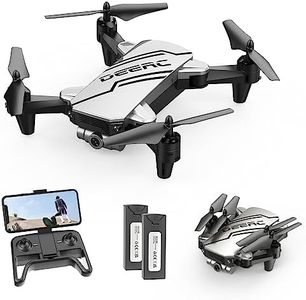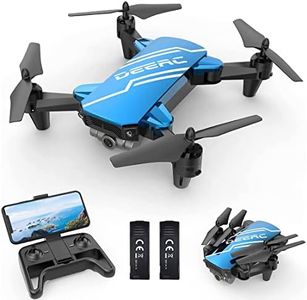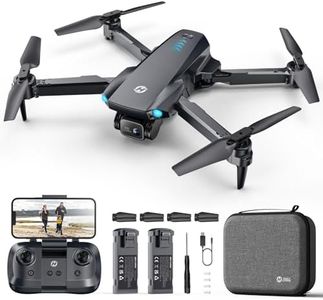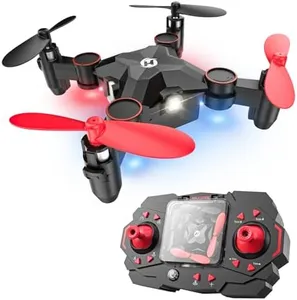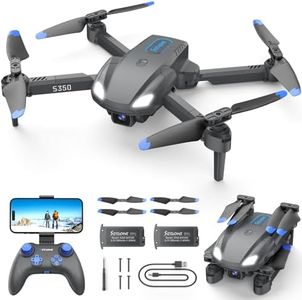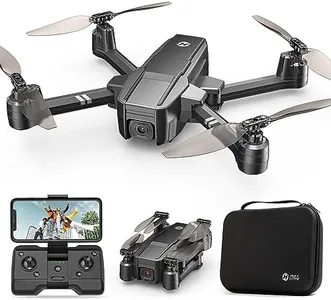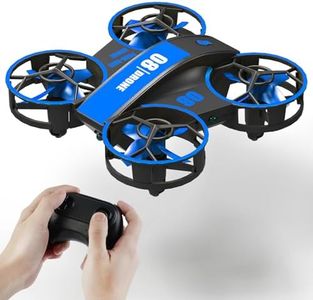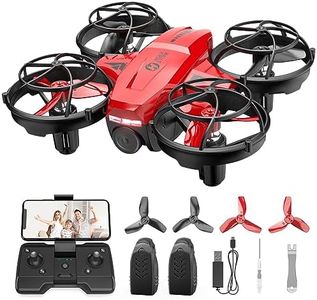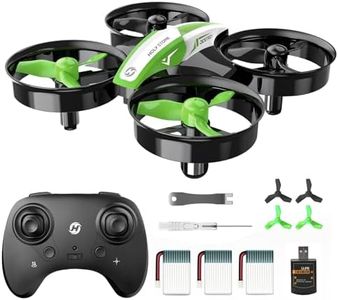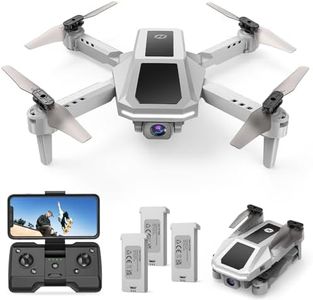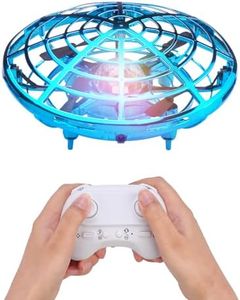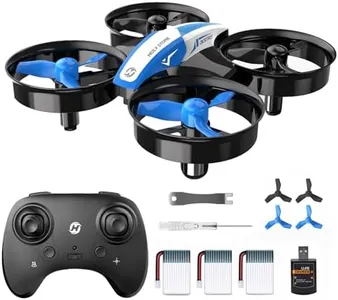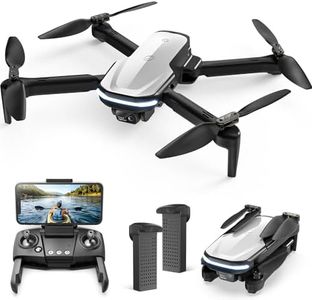We Use CookiesWe use cookies to enhance the security, performance,
functionality and for analytical and promotional activities. By continuing to browse this site you
are agreeing to our privacy policy
10 Best Drones For Kids
From leading brands and best sellers available on the web.Buying Guide for the Best Drones For Kids
When choosing a drone for kids, it's important to focus on safety, ease of use, and durability. Think about the child's age, experience level, and how they will use the drone—whether it's just for flying fun, capturing photos or videos, or learning some basic piloting skills. The goal is to find a model that is engaging, safe, and suitable for their skill level, ensuring an enjoyable and positive experience with their first flying gadget.Size and WeightSize and weight determine how easily a drone can be handled by children and how safe it is if it accidentally bumps into something or someone. Small, lightweight drones are generally better for younger kids—they are less likely to cause damage or injury, and can usually be flown safely indoors. Medium-sized drones may be suitable for older children, as they are more stable outdoors and can handle light wind. Always consider the age and strength of the child; smaller, lighter drones are just easier and safer for most beginners.
Flight TimeFlight time refers to how long the drone can stay in the air on a single battery charge. For kids, drones with flight times of 5-10 minutes are common, while some premium options may offer a bit longer. Shorter flight times can be more manageable for beginners since they keep flying sessions short and reduce the risk of boredom or fatigue. Look for a flight time that matches the child’s attention span, and check if spare batteries are easy to swap for more playtime.
Ease of ControlEase of control is all about how simple the drone is to fly and maneuver. Features like one-button takeoff and landing, altitude hold, and headless mode make the learning process smoother and help avoid crashes. Basic controls are best for younger kids or first-time flyers, while older or more coordinated children might enjoy extra features like flips or basic stunts. Think about the child's ability and interest—start with user-friendly controls and let them progress as they gain confidence.
Durability and Build QualityDurability indicates how well a drone can survive bumps, drops, and crashes—inevitable events when kids are learning to fly. Drones built with flexible plastic or with propeller guards are less likely to break and can withstand rough play. If the drone will be flown indoors, choose models known to withstand frequent crashes; if outdoors, focus on ones with solid construction that can endure outdoor elements. Picking a sturdy drone gives kids the freedom to learn by trial and error without constant repairs.
Safety FeaturesSafety features help prevent accidents. Propeller guards, automatic shut-off, and low-battery alerts are all designed to keep both children and the drone safe. For very young flyers, fully enclosed propellers are ideal, as hands and fingers are less likely to get hurt. Look for these features if safety is a top concern, especially in homes with younger siblings or pets nearby. Make safety a priority, particularly for younger and less experienced children.
CameraSome drones for kids come with cameras, allowing for taking photos or basic videos. While cameras can add fun, they also make drones a bit heavier and require a steadier hand to get good shots. Very young children may not need a camera, as it complicates flying, but older kids who are interested in photography or making videos may find it exciting. Think about whether the child cares about photos and is likely to use this feature, or if simple flying is the main goal.
Range (Control Distance)Range refers to how far the remote controller can communicate with the drone before losing signal. For young children, a short range—just a few meters—is often enough, especially for indoor use or small backyards. Older kids or those flying outdoors might benefit from a longer range to keep things exciting. The right choice depends on where the drone will be used; always pick a range appropriate to the intended environment and supervision level.
